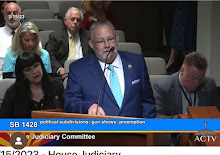Last night, I had an insightful conversation with a friend who is currently running for office. We found ourselves diving deep into the mechanics of political campaigns, breaking them down into two fundamental approaches that every candidate must master to be successful: sales/marketing and warfighting. These two elements, though seemingly distinct, are interwoven and essential to the balance required for a successful political campaign. However, maintaining that balance is no small feat—it's one that many candidates struggle to achieve.
The
campaign journey is more than just knocking on doors or sharing polished sound
bites on social media. It’s about understanding that each move you make, each
message you deliver, has to serve two purposes: reaching voters
(sales/marketing) and outmaneuvering your opponent (warfighting). You need to
connect with people and show them your values, your vision for the future. At
the same time, you need to play a strategic game against your competition,
anticipating their moves and positioning yourself to win when it counts.
This
idea can be summed up by a quote from General Alfred M. Gray, former Commandant
of the Marine Corps:
“In tactics, the most important thing is not whether you go left or right, but why you go left or right.”
Let’s
explore these two perspectives in more detail.
Sales/Marketing: Winning Over the Voter
At
its core, sales and marketing is about one thing: connection. Just as a
company seeks to sell its products or services to consumers, a political
candidate must sell their message to the voter. But unlike businesses that can
offer tangible products, candidates are selling their vision, their leadership,
and the future they promise to build. This makes the process both more
challenging and more rewarding when done effectively.
Steve
Jobs encapsulated the essence of marketing perfectly:
“Marketing is about values. It is a complicated and noisy world, and we are not going to get a chance to get people to remember much about us. No company is. So, we have to be really clear about what we want them to know about us.”
Your
campaign message has to cut through the noise. The political landscape is
loud—countless candidates, ads, and opinions are competing for attention. In
this sea of chaos, clarity is power. If you aren’t clear about who you are,
what you stand for, and what you aim to achieve, voters will move on to the
next name on the ballot.
A
candidate must build a personal brand, not unlike a company builds its
reputation. Voters need to know your values, your vision, and what
differentiates you from your opponent. That’s your pitch. The goal is to make
it so clear that when people think about you, they instantly know what you
stand for—just like they associate Apple with innovation or Nike with
performance.
Warfighting: Battling Your Opponent
Now,
here’s where many candidates falter. While marketing and messaging are vital,
politics is also a battleground. Campaigns are, in many ways, fights for
survival. And as much as you need to connect with voters, you also need to play
an aggressive, strategic game against your competition. In the words of Sir
William Slim:
“There is only one principle of war and that’s this: Hit the other fellow, as quick as you can, and as hard as you can, where it hurts him the most, when he ain’t looking.”
That
might sound harsh, but politics is not a gentle sport. It’s a zero-sum game.
There are winners, and there are losers. To succeed, a candidate must stay on
the offensive, anticipating moves from opponents and responding with calculated
strikes that put them on their back foot.
This
doesn’t mean a campaign should devolve into personal attacks or petty politics.
Rather, it’s about staying sharp, being aware of vulnerabilities, and
positioning yourself in a way that neutralizes threats before they materialize.
It’s about out-strategizing your opponent. When done well, warfighting
becomes an art form—a chess game where every move you make shifts the momentum
in your favor.
Finding the Balance
Balancing
these two sides—sales/marketing and warfighting—is where the magic happens.
It’s where campaigns transform from mediocre efforts into successful political
movements. A successful candidate needs to master both, and most importantly,
know when to lean into one over the other.
So,
if you’re running for office, congratulations! You’ve chosen to serve, which is
no small task. But beyond that, you’ve chosen to enter a competitive arena
where many have failed. To stand a chance, take a moment to reflect on your
campaign and ask yourself:
- Am I rising
above the noise to let the people know about me, my campaign, and my
vision for the future?
Your marketing efforts should be sharp and focused, connecting with voters on a level that makes you memorable. Are you clear on what you want people to know about you? Are your values resonating with them? - Am I fighting
or just going through the motions?
Campaigning is hard work, but it’s also strategic. Are you playing the game with precision, or are you simply hoping to coast along? Have you identified your opponent's weaknesses, and are you capitalizing on them?
Rise and Fight!
Campaigns,
at their core, are both a sales pitch and a battle. The candidates who succeed
are the ones who can master this balance. They rise above the noise with a
clear message, while simultaneously engaging in a calculated fight against
their opponents.
So,
if you’re running for office, I commend you for stepping up, take these
principles to heart. Refine your message, strategize your tactics, and
remember: politics isn’t just about showing up—it’s about showing up to win.
Rise and fight! Good luck.

